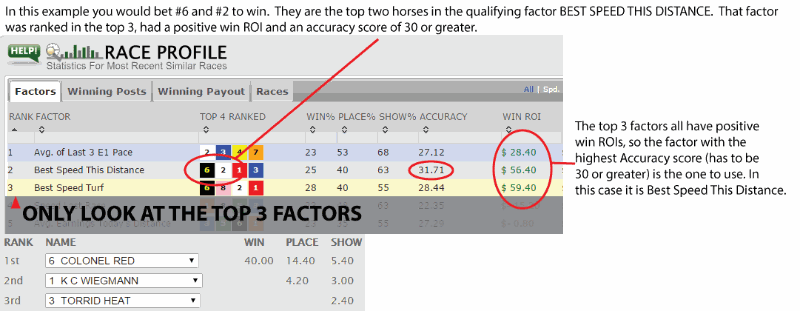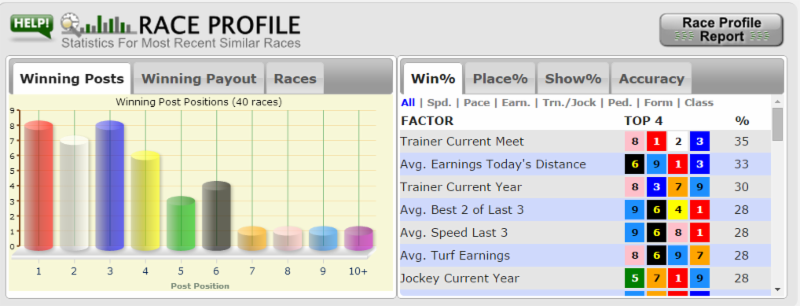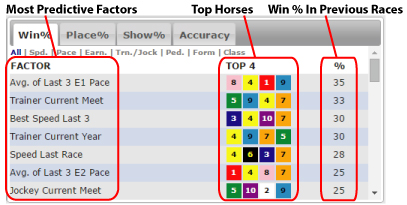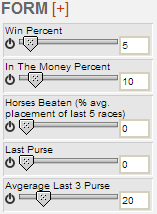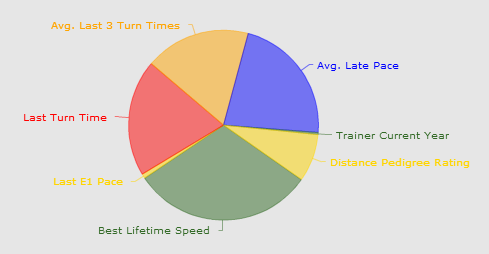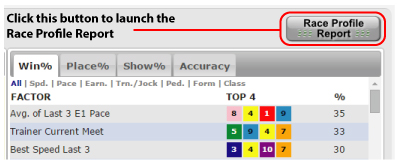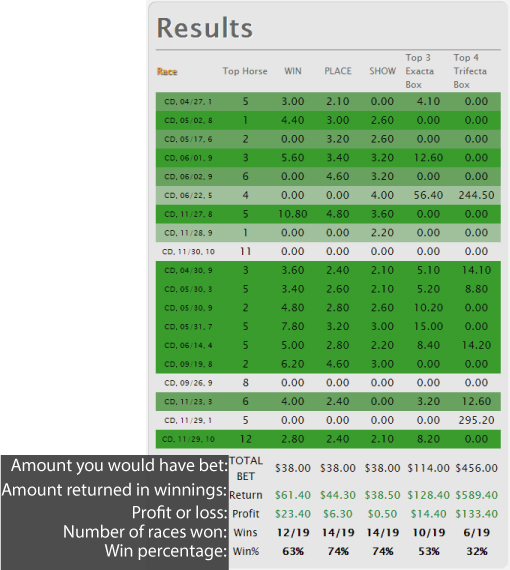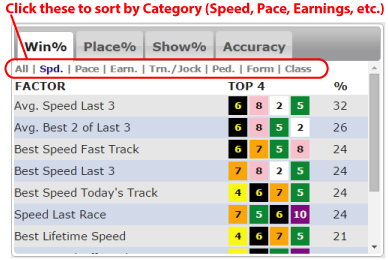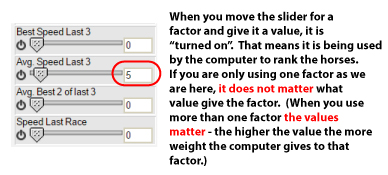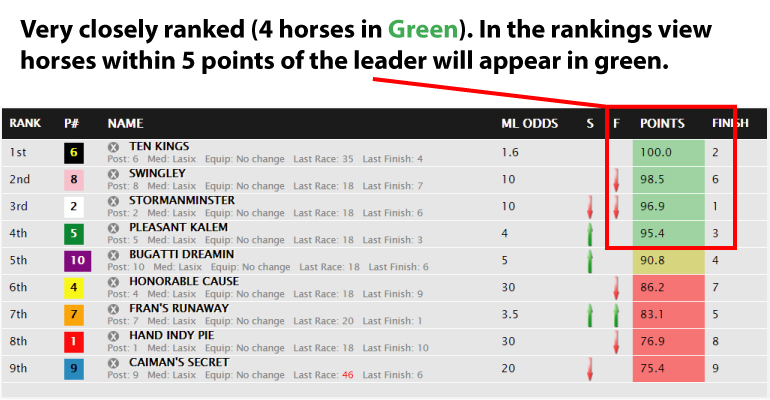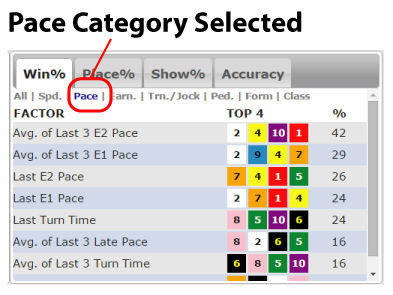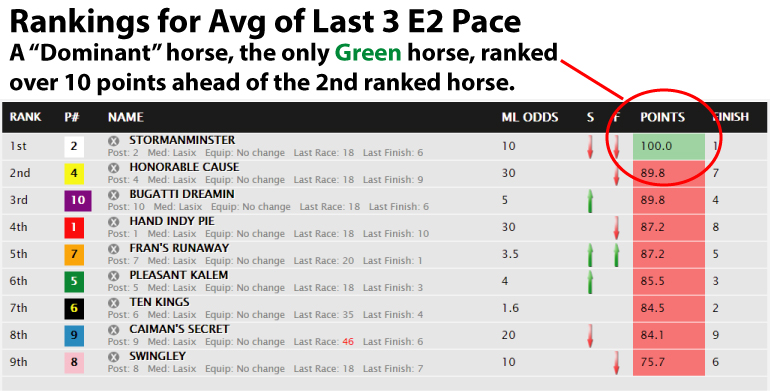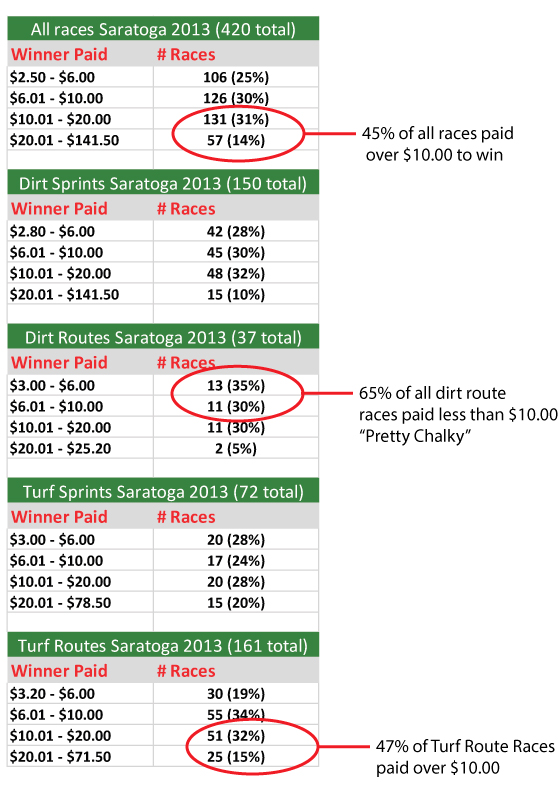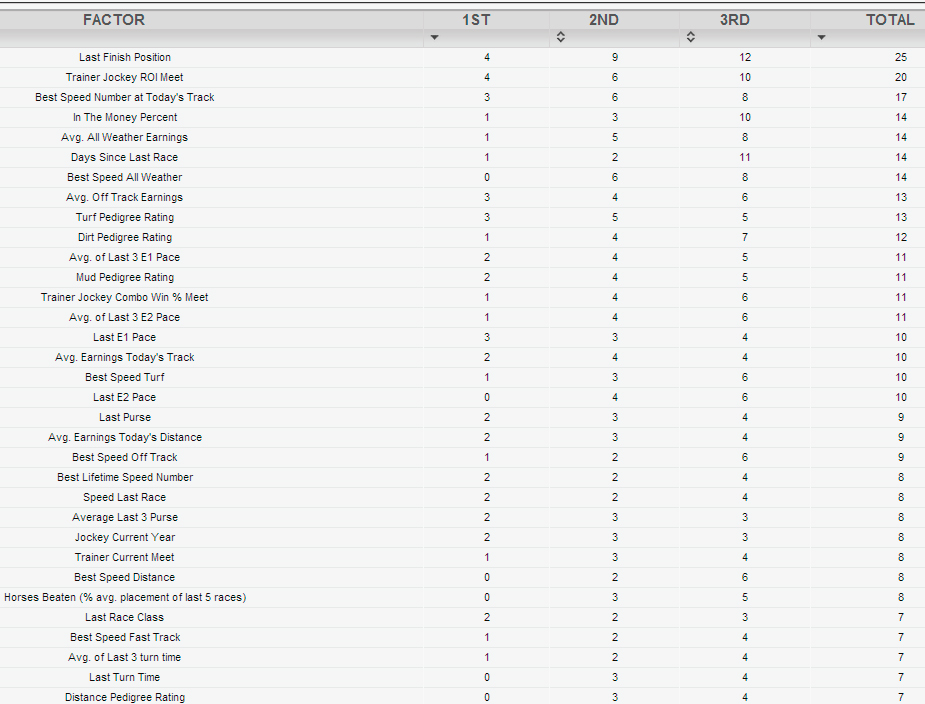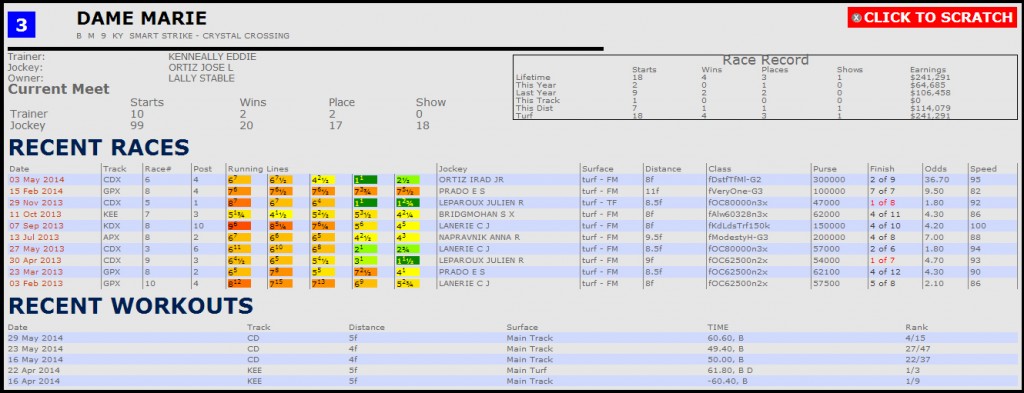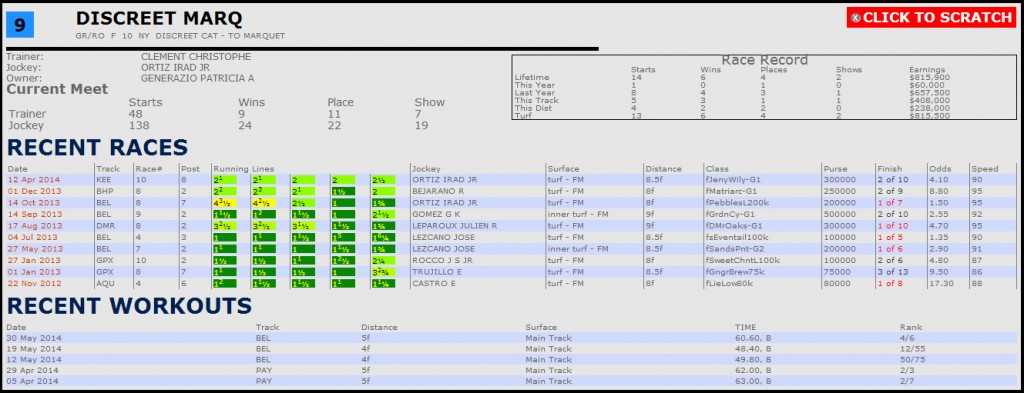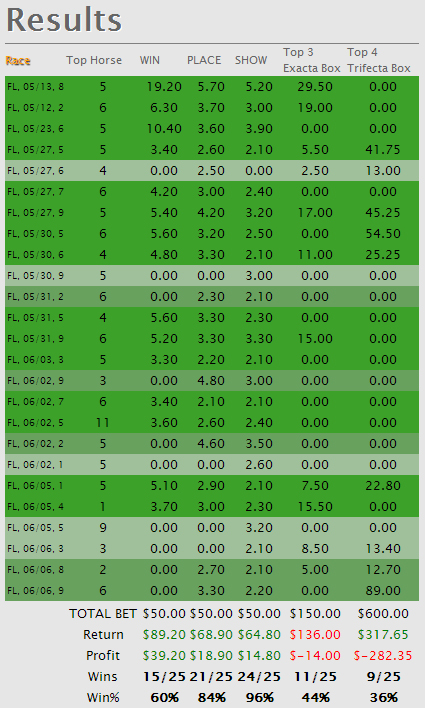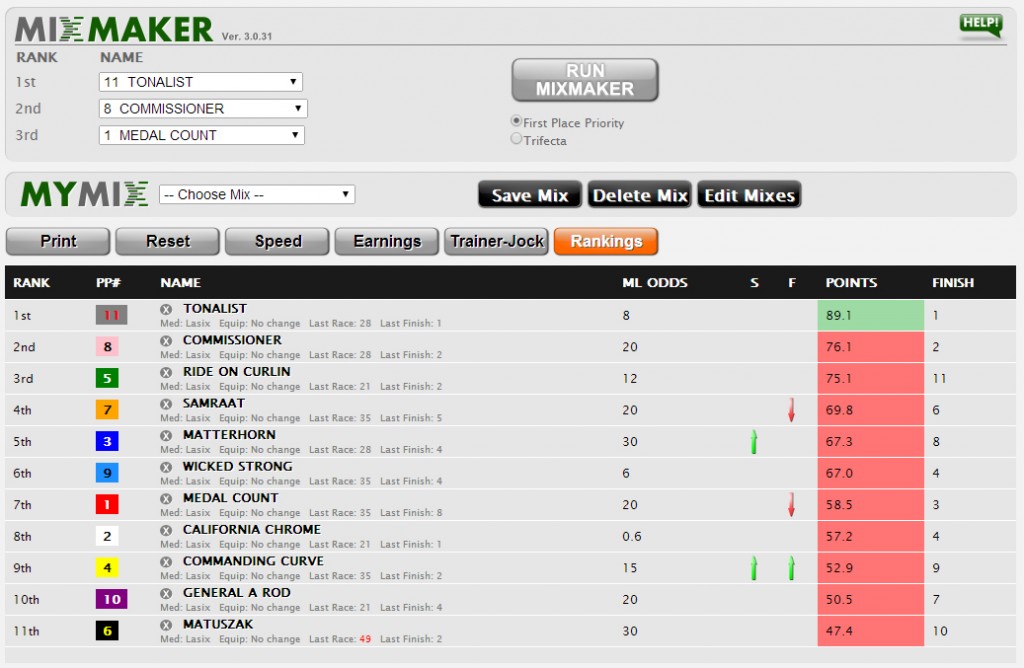After a full summer of juvenile racing some new sires with first racing two-year-olds (first crop sires) have emerged that need to be kept on handicapper’s radars. One of those is Darley America’s Girolamo.
This son of A. P. Indy, who stood for just a $5,000 stud fee in 2015, is the sire of seven winners already from 20 starters. That figure puts him in a tie for second behind only Twirling Candy (10 winners) among first crop sires. Girolamo stood his first two years at Sequel Stallions New York and four of his early winners have come against state-bred company. He even appears to have a star-in-the-making in She’s All Ready, who’s dominated her first two starts by a combined 11 ¼ lengths, including a win in the $200,000 Seeking the Ante Stakes last Friday at Saratoga.
All seven of Girolamo winners have won at first asking and he’s had a winner on the grass and on a sloppy main track. Three Girolamo firsters have gone off favored with three others returning double-digit mutuels. Here’s a further breakdown of his seven winners:
| Date | Horse | #Start/Race Class Won | Margin | Trainer | Odds | Track | Distance/Footing | Track Condition |
| 6/25/2015 | Lucky Lurie | Debut/MSW (NY-Bred) | Neck | Mark Henning | *1.35 | Belmont Park | 5F/Dirt | Fast |
| 8/7/2015 | She’s All Ready | Debut/MSW (NY-Bred) | 8 1/4 L | James Ryerson | *2.35 | Saratoga | 5.5F/Dirt | Fast |
| 8/15/2015 | Backwood Bay | Debut/MSW (NY-Bred) | Head | Linda Rice | 9.4 | Saratoga | 6F/Dirt | Fast |
| 8/17/2015 | Pagan | Debut/MSW (NY-Bred) | Neck | Dominick Schettino | 9 | Saratoga | 5.5F/Turf | Firm |
| 8/20/2015 | Saratoga Giro | Debut/MSW | 5L | Paul Barrow | 1.65 | Finger Lakes | 5F/Dirt | Fast |
| 8/19/2015 | Trulamo | Debut/M Claiming $30,000 | 6 1/4L | Jamie Ness | *1.10 | Delaware Park | 5.F/Dirt | Sloppy |
| 7/19/2015 | Thiscatsacowboy | Debut/Maiden Special | 1 3/4L | Mark Jensen | 7.9 | Arapahoe Park | 5.5F/Dirt | Fast |
*race favorite
In his racing days, Girolamo was more of an outlier for A. P. Indy, one of North America’s top late-developing and classic-distance influences. He was favored in his racing debut at Saratoga in mid-August of his juvenile season and didn’t disappoint. Coming out of the Kiaran McLaughlin barn, Girolamo coasted home under Alan Garcia by 3 ¾ lengths in a 7F main track Maiden Special. McLaughlin started him twice more at two with unplaced finishes in the Futurity Stakes & Champagne Stakes the result.
Girolamo's signature wins came later. At 3 he captured in the Grade 2 Jerome Stakes going a one-turn mile at Belmont Park and added the trophy for Grade 1 Vosburgh Stakes going 7/8ths the following season.
Girolamo certainly has the pedigree to be a top flight stallion. A. P. Indy is the sire of several successful/important sons - Bernardini, Pulpit, Malibu Moon, Mineshaft, Congrats among them. As is the case with Girolamo, the dams of the latter four are daughters of the great Mr. Prospector (and Bernardini’s dam is a Mr. Prospector great-granddaughter).
Girolamo’s female lineage is also exceptionally strong. The famed Carnegie/Phipps breeding operation cultivated this female family, one that's already produced successful stallions like Private Account, Mutakddim and the Maryland stalwart sire Not For Love (also the damsire of California Chrome). Girolamo’s full sister, Supercharger, is the dam of 2010 Kentucky Derby hero Super Saver, who is also emerging as a new force in the North America sire ranks. The WinStar Farm stallion now has three Grade 1 winners in his first crop, two at this year’s Saratoga meeting (Alabama winner Embellish the Lace and King’s Bishop winner Runhappy).
With this kind of pedigree it wouldn’t be a surprise to see the Girolamo’s train on and excel as more distance racing is carded in the coming months. From what we've already seen, his sons and daughters should be respected no matter where they show up.








